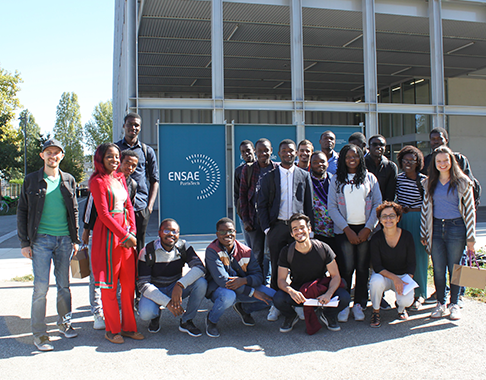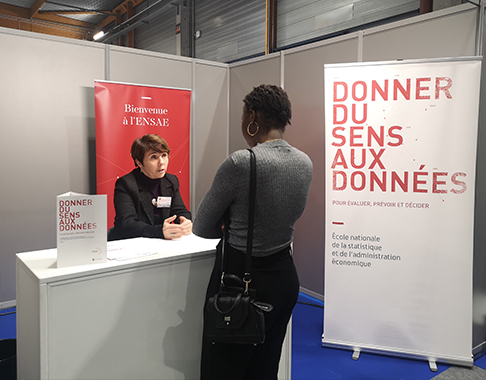Green finance: Risk and Portfolio Management
Enseignant
TANKOV Peter
Département : Finance
Crédits ECTS :
3
Heures de cours :
18
Heures de TD :
0
Langue :
Anglais
Modalité d'examen :
écrit+mém.
Objectif
Part 1 (Thierry Roncalli): The goal of this part is to learn how ESG and climate Risks are integrated into asset management. We will look at the key E, S and G metrics and how they can be combined to create an ESG scoring system. We will then see how these metrics are used by fund managers to construct investment portfolios under ESG constraints. As climate risks are different from ESG risks, we will define the climate risk metrics that are commonly used to measure the transition risk and portfolio greenness. Finally, we will see how they are incorporated into asset allocation, particularly when fund managers build decarbonized and net zero portfolios. These different topics will be applied to equity and fixed-income portfolios. The course will make extensive use of optimization techniques, in particular quadratic and linear programming methods.
Part 2 (Peter Tankov): The goal of this part is to discuss the quantitative approaches to climate risk assessment and portfolio alignment evaluation based on scenarios. First, to understand the modeling of environmental risks, we shall provide a basic introduction to climate change modeling. The aim is not to give full details of the models but to enable the students to understand what kind of information about the future climate and the related risks can be extracted from state-of-the art climatological models and how to quantify the associated uncertainties. The link of CO2 concentration with the climate change and the role of the energy sector in climate transition will be addressed. We shall next discuss the integrated assessment models to understand how the climate dynamics can be coupled to the dynamics of the economy and insist on the role of the financial sector in this process. After discussing the scenarios and the impact of scenario uncertainty, we shall present an overview of the approaches to climate stress testing and the results of the recent supervisory stress testing exercices. Finally, in the last lecture we shall focus on another application of scenarios and discuss the evaluation of portfolio alignment to climate scenarios and the notion of portfolio temperature
Plan
Part 1 (Thierry Roncalli): lectures 2, 3 and 4
Class 1. ESG Investing
· Definition and statistics
· Historical perspective
· Financial ecosystem
· Market of ESG investing
· ESG scoring
· Extra-financial data
· Scoring systems
· Rating systems
· ESG strategies
· Generic strategies
· Active management
· Passive management
· Momentum strategy
· ESG risk premium
· Theory of skewness risk premium
· Expected return vs. realized return
· Investment flows
· ESG. vs Green risk premium
· Bubble risk
Class 2. Impact Investing
· Sustainable financing products
· Green labels
· SRI mutual funds & ESG ETFs
· Green bonds
· Social bonds
· Sustainable development goals (SDG)
· Voting policy, shareholder activism and engagement
· Cost of capital
· Theory (shareholder vs. debtholder)
· Relationship between financing and investing
· Impact on credit risk
Class 3. Net Zero Investing (Thierry, 3h)
· Net zero scenarios
· Carbon emissions vs. carbon intensity
· Carbon budgets
· Decarbonization & transition dimensions
· Net zero carbon metrics
· Greenness intensity measures
· Portfolio optimization
· Integrated approach
· Core-satellite approach
Part 2 (Peter Tankov): lectures 1, 5 and 6
Class 4. Introduction to climate risks, physical risks
Introduction to climate change, climate financial risks and climate finance
· Physical risks and climate scenarios
o Climate models, scenarios and data sources
o Impact of climate change on extreme climate events
o Case study 1: heatwave risk in the Paris area
o Case study 2: financial impact of tropical cyclones under changing climate
Class 5: Transition risks and IAM scenarios
· Integrated assessment models and transition scenarios
o The DICE model
o Scenario providers: IEA, NGFS, IPCC
o Impact of scenario uncertainty
· Climate stress testing
Class 6: Portfolio alignment to net zero scenarios
· Portfolio alignment to a temperature trajectory
· Comparing portfolio alignment methodologies
· How to build aligned portfolios
Références
References for part 1:
· Thierry Roncalli, Handbook of Sustainable Finance, 2023, http://www.thierry-roncalli.com/SustainableFinanceBook.html.
References for part 2:
· Jean-Charles Hourcade, Frédéric Ghersi, Romain Grandjean, Julien Lefèvre, Peter Tankov and Stéphane Voisin. Climate-economic scenarios and models: a reading guide for sustainable finance, Institut Louis Bachelier, Opinions & Débats collection, 2021.
· Maria Flora and Peter Tankov, Green Investment and Asset Stranding Under Transition Scenario Uncertainty, Energy Economics, 2023.
· Philippe Drobinski, Théo Le Guenedal and Peter Tankov, Cyclone generation Algorithm including a THERmodynamic module for Integrated National damage Assessment (CATHERINA 1.0) compatible with Coupled Model Intercomparison Project (CMIP) climate data, Geosci. Model Dev., 15, 8001–8039, 2022.
· Julie Raynaud, Peter Tankov and Stéphane Voisin, Portfolio Alignment to a 2° C Trajectory: Science or Art?, Revue d'Economie Financière, 138 (2020): 69-87.
· Peter Tankov and Alexis Tantet, Climate Data for Physical Risk Assessment in Finance, https://ssrn.com/abstract=3480156










